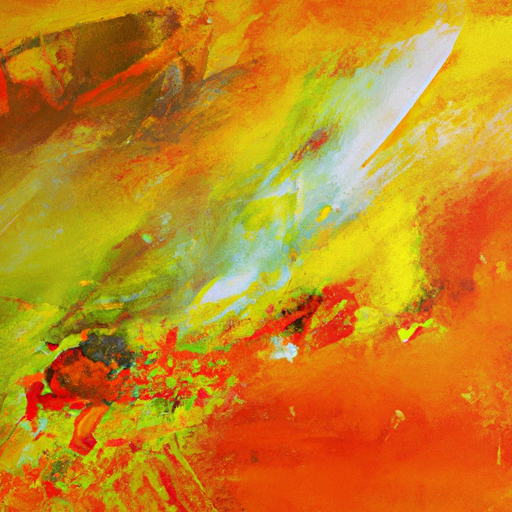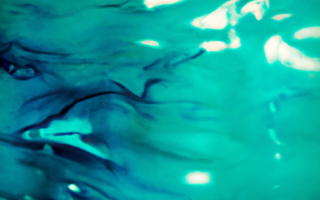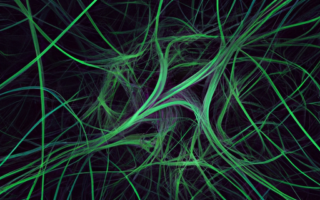Origins of Abstract Art
Understanding the Concept of Abstract Art: Exploring its Origins, Techniques, and Meanings
Abstract art is a fascinating and often misunderstood form of artistic expression that has been captivating audiences for decades. In order to truly appreciate and comprehend abstract art, it is essential to delve into its origins and understand its beginnings.
The origins of abstract art can be traced back to the late 19th and early 20th centuries, during a time of significant artistic experimentation and innovation. Traditional art forms, such as realism, were being challenged and artists were seeking new ways to express themselves and break free from the constraints of literal representation.
It was during this period that artists like Wassily Kandinsky, Piet Mondrian, and Kazimir Malevich began to explore the possibilities of non-representational art. They believed that art should not attempt to imitate or replicate the physical world, but rather should convey emotions, ideas, and spiritual experiences.
Kandinsky, often considered the pioneer of abstract art, believed that color and form had their own inherent meanings and could communicate on a deeper, more subconscious level. He viewed art as a means of spiritual expression and sought to create a visual language that could transcend traditional narrative or pictorial representation.
Similarly, Mondrian and Malevich embraced geometric abstraction, reducing art to its most basic elements of line, shape, and color. They saw abstract art as a way to achieve a sense of purity and universal harmony, stripped of any unnecessary or extraneous details.
The emergence of abstract art was also heavily influenced by broader cultural and intellectual movements of the time. The rise of modernism, with its emphasis on progress, innovation, and individualism, provided a fertile ground for the development of abstract art. Additionally, the exploration of new scientific theories, such as Einstein’s theory of relativity, challenged existing notions of reality and encouraged artists to explore alternative ways of perceiving the world.
Through their experimentation and artistic exploration, these pioneers of abstract art paved the way for a new artistic movement that continues to evolve and inspire artists today. Abstract art has the power to evoke emotions, provoke thought, and ignite imagination, offering a unique and subjective experience for each viewer.
In conclusion, understanding the origins of abstract art provides valuable insight into its purpose, techniques, and meanings. The pioneering artists of the late 19th and early 20th centuries challenged traditional artistic conventions and sought to create a new visual language that could transcend the limitations of literal representation. Their innovative approaches and philosophical beliefs continue to shape the world of abstract art, making it a captivating and enduring form of artistic expression.
Techniques Used in Abstract Art
Pojęcie sztuki abstrakcyjnej jest szeroko rozumiane jako wyraz artystycznego wyrażenia, które odbiega od przedstawiania świata w sposób realistyczny. Jednak aby zrozumieć pełnię wnioskowania abstrakcji, niezbędne jest zrozumienie różnych technik, które artyści używają w swojej pracy. W tej części artykułu skoncentrujemy się na omówieniu technik stosowanych w sztuce abstrakcyjnej.
Jedną z najważniejszych technik stosowanych w sztuce abstrakcyjnej jest „gesturalność”. Obejmuje ona eksperymentowanie z dynamicznymi, energetycznymi ruchami pędzla lub narzędzi, aby wyrazić emocje i pokazać energetyczną siłę artysty. Technika ta pozwala na tworzenie nieuporządkowanych i zawiłych kresek, które pełne są ekspresji. Jest to popularna technika stosowana przez artystów abstrakcyjnych, takich jak Jackson Pollock.
Kolejną techniką, która jest szeroko stosowana w sztuce abstrakcyjnej, jest „piękno koloru”. Artyści używają różnorodnych palet kolorów, aby stworzyć harmonię lub kontrast w swoich obrazach. Kolor jest używany jako narzędzie do tworzenia nastroju i komunikowania się z widzem. Abstrakcyjne dzieła sztuki są często bogate w intensywne kolory, które podkreślają emocje i intensywność artystycznego przesłania.
Inną techniką stosowaną w sztuce abstrakcyjnej jest „efekt teksturalny”. Artyści experimentują z różnymi materiałami i narzędziami, aby osiągnąć różne efekty i struktury na płaszczyźnie obrazu. Mogą używać farby grubej, pasty, piasku, szkła lub innych materiałów, aby stworzyć interesującą fakturę. Tworzenie różnych tekstur dodaje głębi i złożoności do dzieła sztuki abstrakcyjnej.
Ostatnią techniką, na którą warto zwrócić uwagę, jest „koloryzacja geometryczna”. Ta technika skupia się na użyciu form geometrycznych, takich jak linie, kształty i wzory, aby tworzyć kompozycje abstrakcyjne. Artyści często eksperymentują z różnymi układami i proporcjami, aby stworzyć równowagę i harmonię. Wykorzystanie geometrii daje dziełu sztuki abstrakcyjnej bardziej strukturalne i zorganizowane wrażenie.
Techniki używane w sztuce abstrakcyjnej są bardzo zróżnicowane i nieograniczone. Artyści wykorzystują swoją wyobraźnię i eksperymenty, aby tworzyć unikalne i oryginalne dzieła sztuki. Dzięki tym technikom abstrakcyjna sztuka staje się nie tylko przedstawieniem emocji i osobistego doświadczenia artysty, ale także możliwością interpretacji i odbioru przez widza.
Meaning and Interpretation in Abstract Art
Understanding the meaning and interpretation of abstract art is a complex task, as it often defies traditional understanding and representation. Unlike representational art, which aims to depict recognizable objects or scenes, abstract art emphasizes the artist’s subjective expression and conveys emotions, ideas, and concepts in a non-representational manner. In this article, we will delve into the fascinating world of abstract art, exploring its origins, techniques, and the various ways it can be interpreted.
Meaning in abstract art is highly subjective and can vary from viewer to viewer. The artist’s intention and the viewer’s perception both play significant roles in determining the meaning of an abstract artwork. While some artists may create abstract art to convey specific emotions or ideas, others may prefer to leave the interpretation open-ended, allowing the viewer to derive their own meanings.
One of the key aspects of understanding abstract art is acknowledging the absence of easily recognizable elements. Instead of focusing on representing physical reality, abstract artists employ various techniques to create a visual language of their own. These techniques may include the use of vibrant colors, bold brushstrokes, geometric shapes, or even the absence of any recognizable forms. The artist’s choice of materials, textures, and compositions further adds depth and complexity to the artwork, enhancing its overall meaning.
Interpreting abstract art requires a willingness to engage with the artwork on an emotional and intellectual level. Rather than looking for a literal narrative, viewers are encouraged to explore the artwork’s formal elements, such as line, color, texture, and composition. These elements often convey a sense of energy, movement, balance, or tension within the artwork, evoking various emotions and impressions.
Another approach to interpreting abstract art is to consider the art historical, social, or cultural context in which it was created. Abstract art emerged in the early 20th century, as artists sought new ways to break free from the confines of traditional representation. Movements such as Cubism, Futurism, and Abstract Expressionism introduced groundbreaking ideas and techniques that influenced the development of abstract art. Understanding these movements and their underlying philosophies can provide valuable insights into the meanings embedded within abstract artworks.
Ultimately, the meaning and interpretation of abstract art are deeply personal experiences. Each viewer brings their own background, emotions, and perspectives to the artwork, influencing how they perceive and understand it. Abstract art challenges us to think beyond the obvious, encouraging us to explore the depths of our imagination and to embrace multiple interpretations. It invites us to engage in a visual dialogue with the artist, creating a unique and personal connection that transcends traditional boundaries.
In conclusion, abstract art offers a rich and multi-faceted experience that goes beyond merely depicting what meets the eye. Its meaning and interpretation rely on subjective responses, personal experiences, and the interaction between the artist and the viewer. By exploring its origins, techniques, and the diverse ways it can be interpreted, we can gain a deeper appreciation for the beauty and complexity of abstract art.
Exploring the Concept of Abstract Art
Exploring the concept of abstract art is a fascinating journey into a world where artists delve into the depths of imagination, pushing the boundaries of traditional representation. Abstract art is a genre that eludes easy definition, as it is characterized by its departure from realistic depictions and its emphasis on the use of form, color, line, and texture to convey emotions, ideas, and the essence of the subject matter.
Origins of abstract art can be traced back to the late 19th and early 20th centuries, when artists began to steer away from literal representation and explore new artistic possibilities. One of the pioneers of abstract art was Wassily Kandinsky, a Russian painter who believed that art should be free from the constraints of depicting the visible world. His painting „Composition VII” (1913) is a prime example of this departure, as it is a symphony of colors, shapes, and lines that invite the viewer to interpret their own subjective meaning.
Techniques used in abstract art are as diverse as the artists themselves. Some artists create abstract compositions by using bold, gestural brushstrokes, allowing the paint to flow and intertwine on the canvas, creating a sense of movement and energy. Others may use geometric shapes, creating a sense of order and structure. Still, others may experiment with unconventional materials and techniques, such as collage or assemblage, to create unique textures and layered compositions.
Meanings in abstract art are subjective and open to interpretation. Unlike representational art, abstract art does not convey a specific narrative or depict recognizable objects. Instead, it invites the viewer to engage with the artwork on a deeper level, tapping into their own emotions, memories, and experiences to find personal meaning. What one person sees as a chaotic expression of energy, another may see as a serene meditation.
Understanding abstract art requires an open mind and a willingness to let go of preconceived notions about what art should be. It challenges viewers to question and explore their own perceptions of reality and pushes the boundaries of artistic expression. Whether you find solace in the vibrant colors and textures or are captivated by the interplay of shapes and lines, abstract art has the power to evoke emotions and spark conversations.



